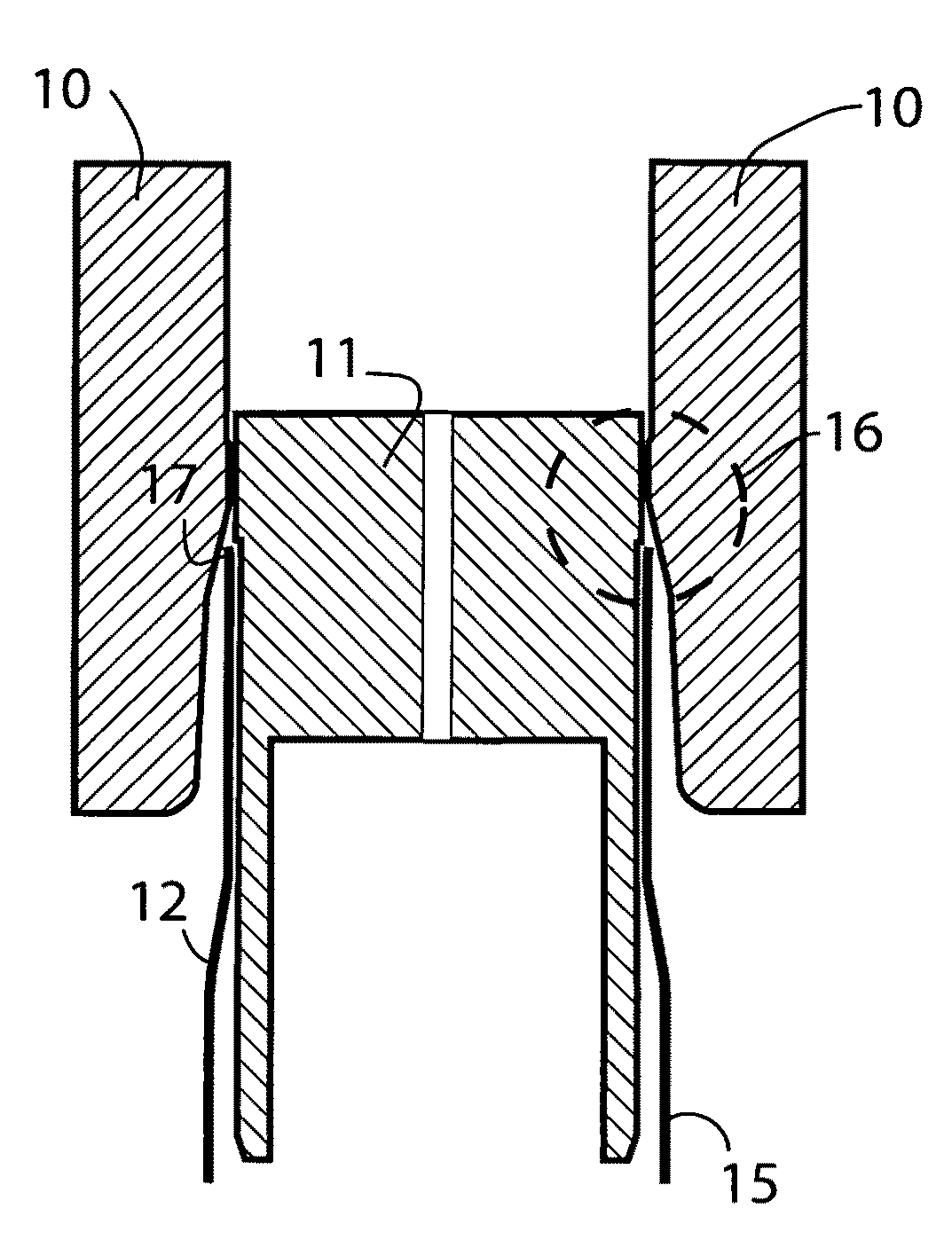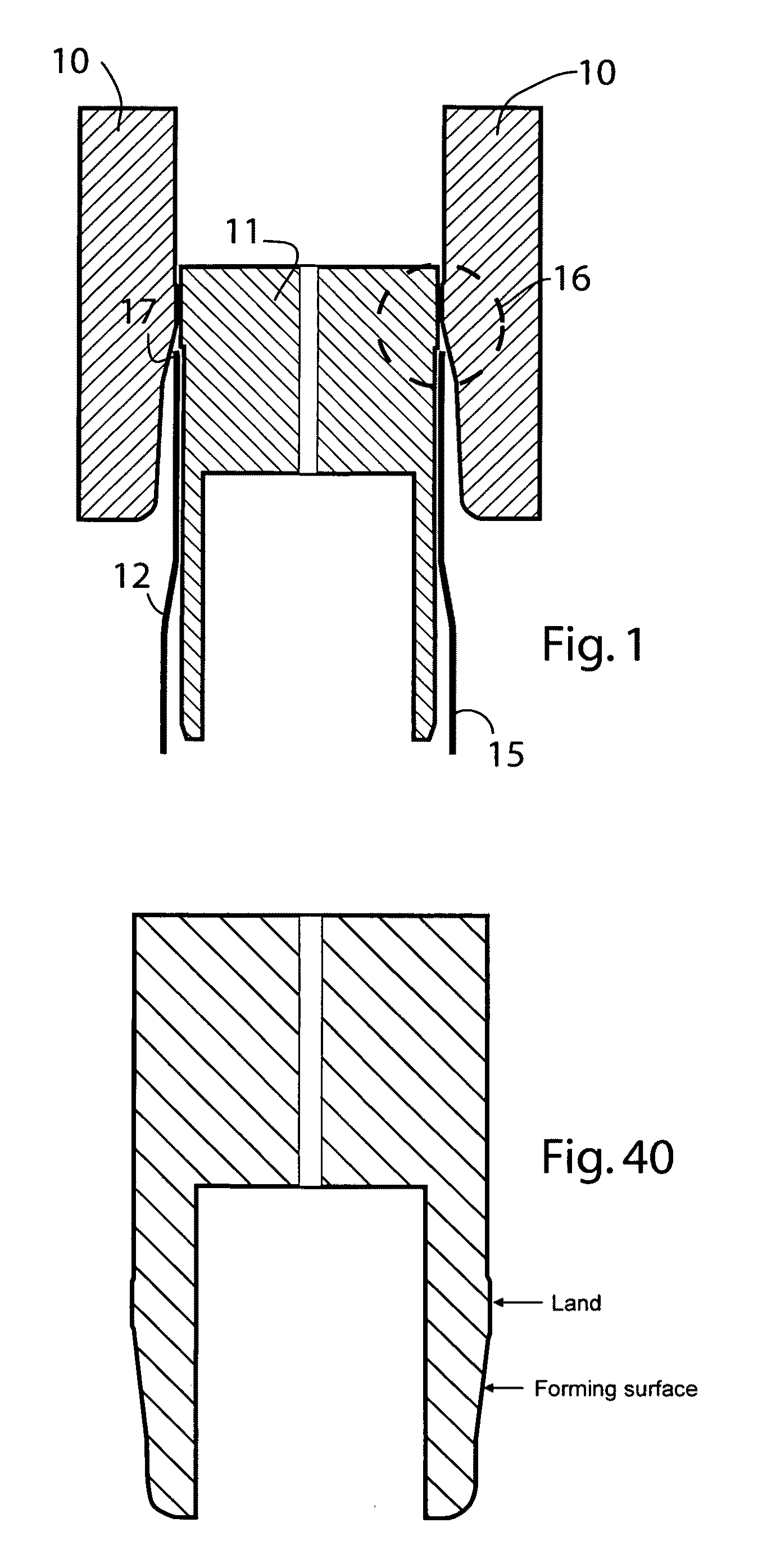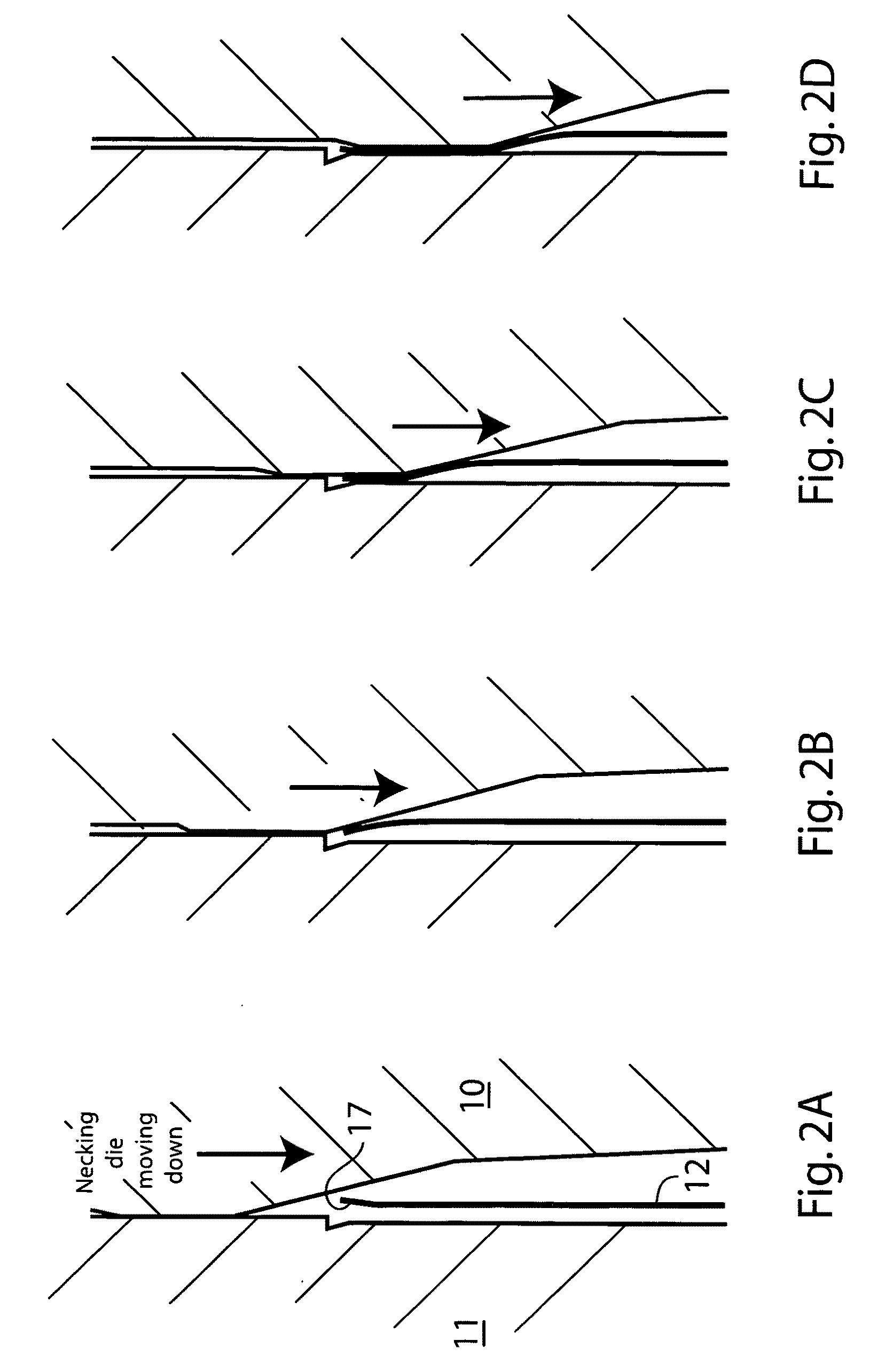Minimizing circumferential transition lines during container shaping operations
a technology of circumferential transition lines and container shaping, which is applied in the direction of shaping tools, cutting tools, instruments, etc., can solve the problems of difficult or impossible to avoid the formation of visible circumferential transition lines or ripples in the necked-in portion of the resulting container, and the problem is not particularly acute, and the circumferential transition lines tend to be highly noticeabl
- Summary
- Abstract
- Description
- Claims
- Application Information
AI Technical Summary
Benefits of technology
Problems solved by technology
Method used
Image
Examples
Embodiment Construction
[0008]One exemplary embodiment of the present invention provides a method of producing a set of tools for use in a shaping operation to shape open ends of an identical set of tubular items made of a deformable metal of known physical properties in a plurality of shaping stages, which method comprises: establishing an optimal profile for the items as a preferred final design profile therefor; providing a first set of tools of progressively different operational size and shape that may be used in succession to shape the items to provide the items with an actual profile at the open ends thereof that approximates the design profile, the use of each tool representing a separate stage of the shaping operation; using the tools to shape one of the items in a multi-stage shaping operation to obtain, at each stage, the item having a first actual shaped profile; for each stage of the shaping operation, measuring a difference produced between the first actual shaped profile of the item and the ...
PUM
| Property | Measurement | Unit |
|---|---|---|
| Length | aaaaa | aaaaa |
| Size | aaaaa | aaaaa |
| Shape | aaaaa | aaaaa |
Abstract
Description
Claims
Application Information
 Login to View More
Login to View More - R&D
- Intellectual Property
- Life Sciences
- Materials
- Tech Scout
- Unparalleled Data Quality
- Higher Quality Content
- 60% Fewer Hallucinations
Browse by: Latest US Patents, China's latest patents, Technical Efficacy Thesaurus, Application Domain, Technology Topic, Popular Technical Reports.
© 2025 PatSnap. All rights reserved.Legal|Privacy policy|Modern Slavery Act Transparency Statement|Sitemap|About US| Contact US: help@patsnap.com



